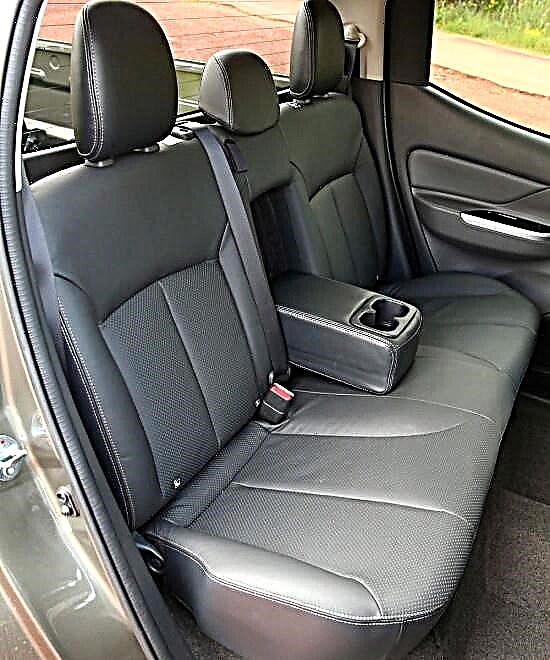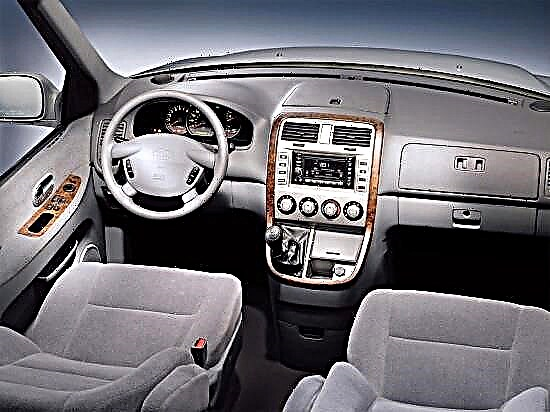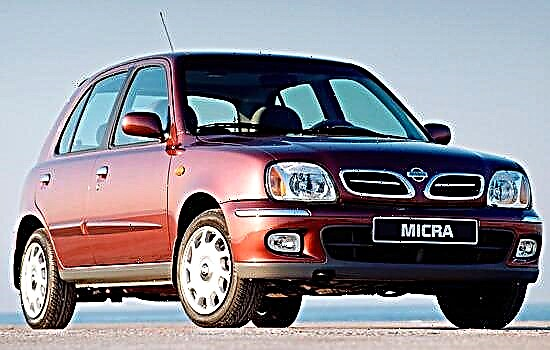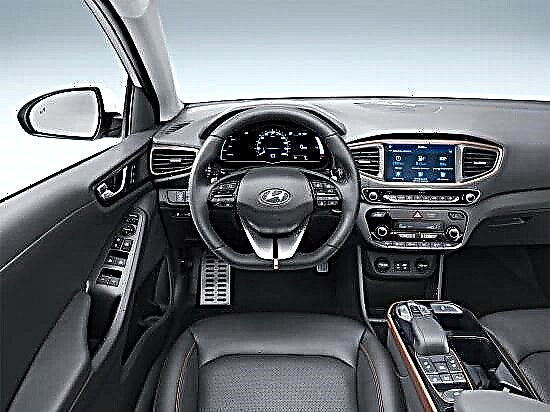At the Geneva Motor Show, which took place in early March 2016, representatives of the Hyundai brand officially demonstrated the electric IONIQ hatchback with the Electric prefix to the world (although it was declassified on the Web a few weeks before the world debut).
The car, which became the final link in the "electrified family" of the South Korean company, already in 2016 began to develop world markets, and started from its native country.

It will not be difficult to recognize the Hyundai IONIQ in the Electric version against the background of hybrid "brothers": it is distinguished by LED front optics, a blank decorative trim on the radiator grille (and its color can be selected separately) and 17-inch wheels of the original design.

The electric Ionic is 4470 mm long, 1820 mm wide, and 1450 mm high. The distance between the axles of the car is 2700 mm (in general, full parity with the standard model).
In general, the interior of Hyundai IONIQ Electric is designed in the same vein as on the Hybrid version: stylish design, subordinate to the “family” brand tendencies, decent finishing materials and a bunch of modern “chips”. But it also has individual features such as a push-button transmission selector and parts in an exclusive copper color that evokes associations with electricity.

In the "Ionika" cabin, five seats are organized on the "green" traction with a sufficient margin of space both in front and behind, and the volume of the luggage compartment varies from about 400 to 750 liters, depending on the position of the backs of the rear sofa.
Specifications. The driving force for the Hyundai IONIQ Electric is driven by an AC electric motor delivering 120 horsepower (88 kW) and 295 Nm of torque right from the start, which is installed complete with a single-stage gearbox and 28 kW / h polymer lithium-ion battery.

The Korean electric car accelerates to a maximum of 165 km / h, and can drive in three modes - Normal, Eco and Sport. On fully contaminated batteries "Ionic" according to the European NEDC method is able to cover more than 250 km of track, but in a more realistic South Korean cycle, these figures are much less - only 169 km. "Filling" the five-door to the level of 80% takes only 24 minutes, provided that you use the device for quick charging, but you can also turn to a regular outlet or the recuperation function.
From a technical point of view, the Hyundai IONIQ Electric is not much different from the basic version of the Hybrid: it is built on a front-wheel drive architecture with a rigid body, in which high-strength steels and aluminum are widely used, and independent MacPherson struts at the front. But on the rear axle there is a semi-independent scheme with a torsion beam. In addition, the electric car is equipped with electric power steering and disc brakes on all wheels with ABS, EBD and other technologies.
Options and prices. In the South Korean market, Hyundai IONIQ Electric is sold at a price of 40 million won (~ $ 33,100), and in other countries (which, unfortunately, does not include Russia) will be available soon.
The initial configuration of the car combines: seven airbags, 16-inch wheel rims, fully LED optics, a virtual instrument panel, leather trim, dual-zone "climate", an audio system with six speakers, multimedia and a lot of modern safety and comfort systems.











